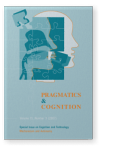A biosemiotic note on organisms, animals, machines, cyborgs, and the quasi-autonomy of robots
It is argued in this paper that robots are just quasi-autonomous beings, which must be understood, within an emergent systems view, as intrinsically linked to and presupposing human beings as societal creatures within a technologically mediated world. Biosemiotics is introduced as a perspective on living systems that is based upon contemporary biology but reinterpreted through a qualitative organicist tradition in biology. This allows for emphasizing the differences between (1) an organism as a general semiotic system with vegetative and self-reproductive capacities, (2) an animal body also with sentience and phenomenal states, and (3) higher forms of anthroposemiotic systems such as humans, machines and robots. On all three levels, representations (or sign action) are crucial processes. The “representationalism” invoked by critiques of cognitive science and robotics tends to focus only on simplistic notions of representation, and must be distinguished from a Peircean or biosemiotic notion of representation. Implications for theorizing about the physical, biological, animate, phenomenal and social body and their forms of autonomy are discussed.
Cited by (3)
Cited by three other publications
Kadish, David
2019. [
Electronic Workshops in Computing, ],

Kritz, Maurício
2017.
From Systems to Organisations.
Systems 5:1
► pp. 23 ff.

Emmeche, Claus
2015.
Semiotic Scaffolding of the Social Self in Reflexivity and Friendship.
Biosemiotics 8:2
► pp. 275 ff.

This list is based on CrossRef data as of 10 july 2024. Please note that it may not be complete. Sources presented here have been supplied by the respective publishers.
Any errors therein should be reported to them.
